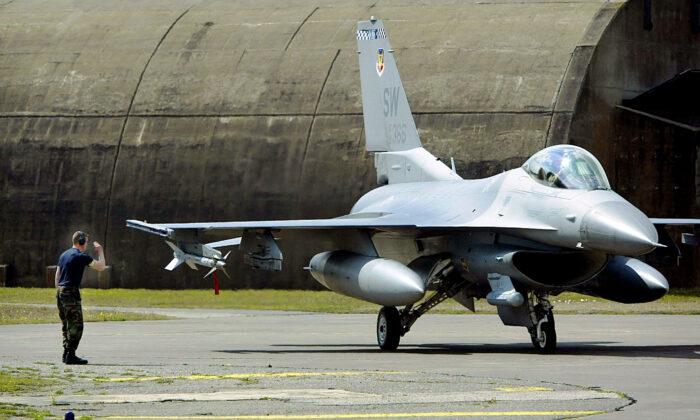A Chinese balloon was spotted floating over the Middle East by the U.S. forces stationed there last fall, but didn’t prompt any attempt to get a closer look at it, the top air commander for the region said Monday.
In the latest revelation of what appears to be a part of Chinese communist regime’s global airborne surveillance project, Lt. Gen. Alex Grynkewich told reporters that the balloon was deemed not a threat because it “did not go anywhere near any of our sensitive sites.”
“We were not sure, was it a weather balloon? Was it some sort of a surveillance balloon? We never got up close to it because it was never a threat. We never had to go inspect it and get a visual identification of it. We never had to go inspect it and get a visual identification of it.”
The three-star general officer didn’t say when or where exactly the balloon was spotted. In 2022, an estimated 40,000 to 60,000 American troops were operating in a 21-country region spanning from Egypt in the west to Kazakhstan in the northeast, under the direction of United States Central Command (CENTCOM).
The Chinese balloons, despite having been seen “flown through a few times” since Grynkewich was put in charge of the region’s air operations, are actually not among CENTCOM’s top concerns.
“The level of concern I have about them is extremely low,” he told the audience. “I understand they people are asking the question in the current context, but it’s not something that I lose sleep at night over.”
With that said, Grynkewich did agree that there are a lot of applications for high-altitude stratospheric level platforms, including balloons and winged aircraft capable of long-endurance operation.
“It’s really about persistence. It’s about being able to maintain your eye on a particular area of the plan for a while,” he explained. “So that is obviously something [that] will be [an] interest for us in the U.S. Air Force and AFCENT.”
Citing classified information, Grynkewich didn’t provide additional details of other sightings of balloons in the years prior.
Monday’s discussion comes as NATO Secretary-General Jens Stoltenberg raised alarms over the recent balloon incidents, which he said do show a “pattern” of Chinese surveillance and should serve as a “tangible reminder” of the threat the Chinese regime poses to the United States and allies.
“The Chinese balloon over United States confirms a pattern of Chinese behavior, where we see that China over the last years has invested heavily in new military capabilities, including different types of surveillance and intelligence platforms,” Stoltenberg said last week at a press conference with U.S. Secretary of State Antony Blinken.
“We’ve also seen increased Chinese intelligence activities in Europe—again, different platforms,” he added. “They use satellites, they use cyber, and as we’ve seen over the United States, also balloons.”
Earlier this month, a suspected Chinese surveillance balloon traveled across the continental United States before it was shot down off the coast of South Carolina. On Feb. 10, 11, and 12, U.S. fighter jets shot downed three unidentified objects: one in northern Alaska, one in Canada’s Yukon Territory, and one described to have an “octagonal” shape near Lake Huron, Michigan.





